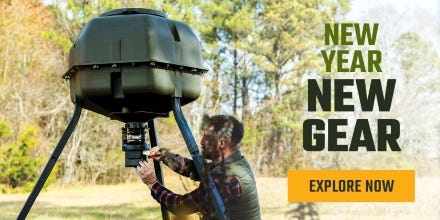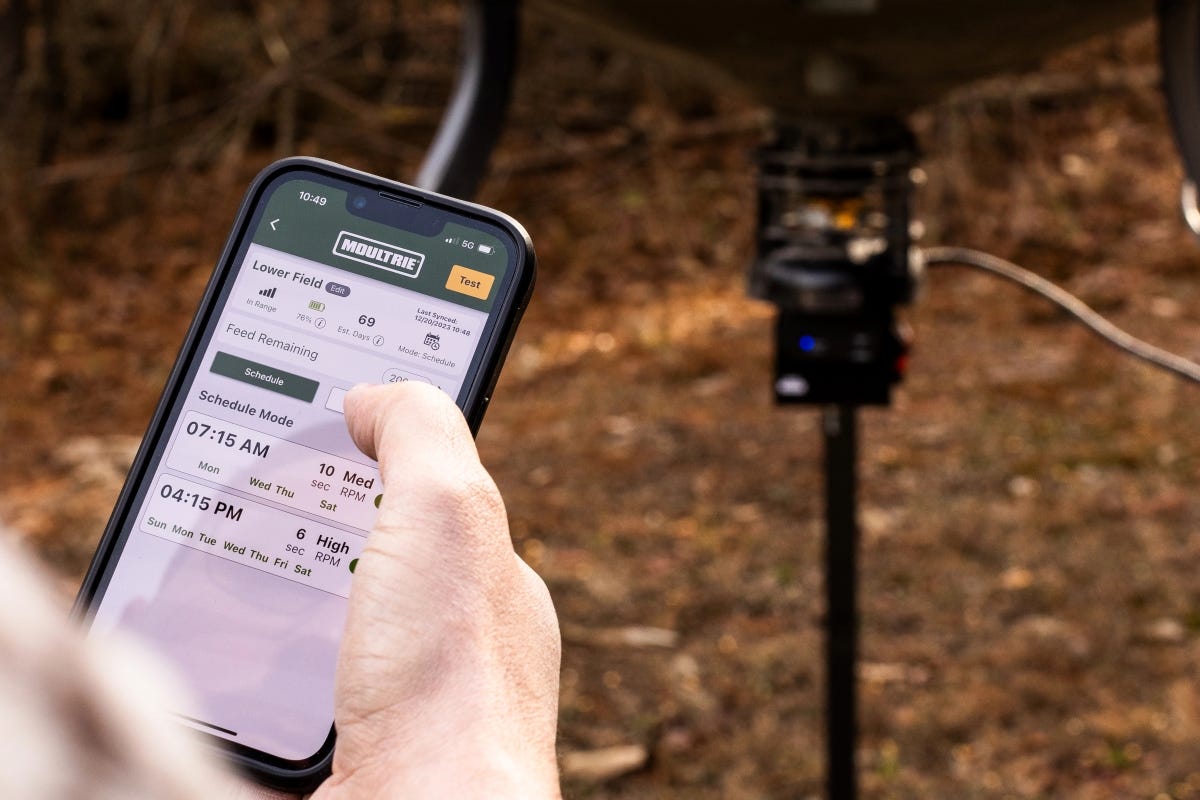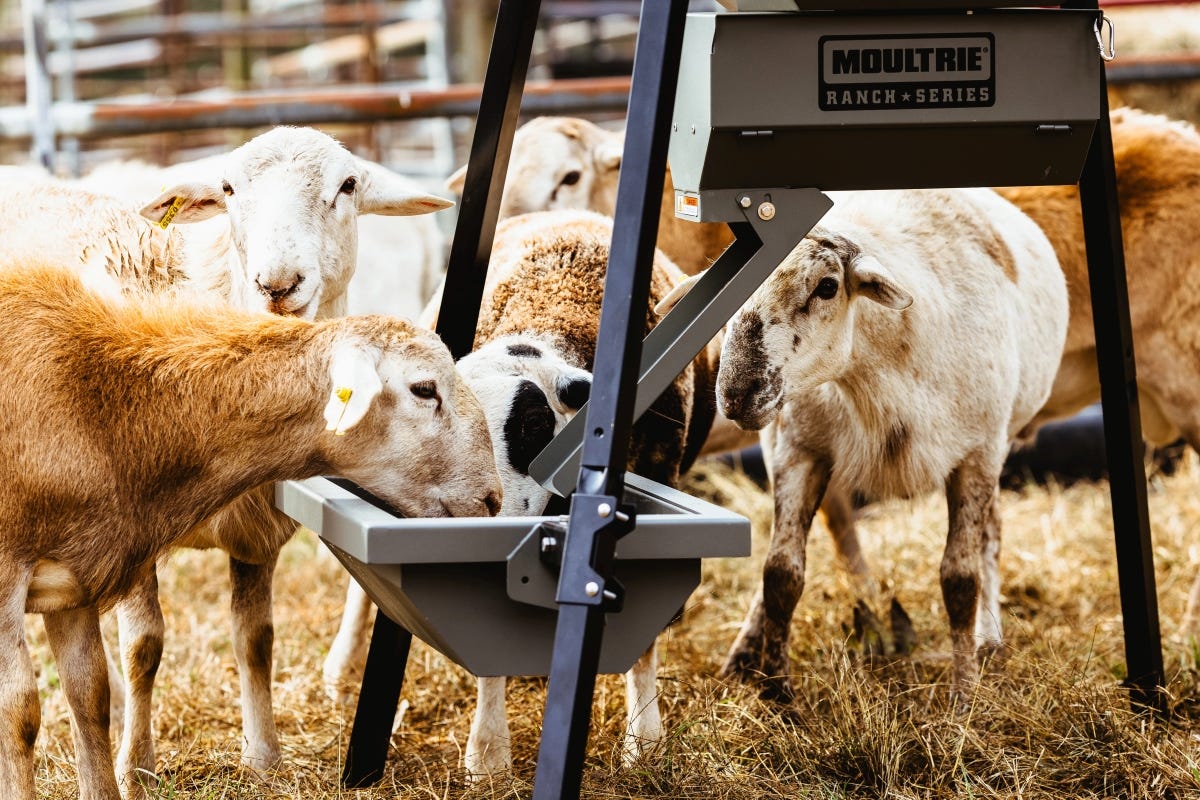- Aug 12, 2019
Using Deer Feeders to Pattern Mature Bucks


A lot of folks will tell you that you can’t kill a big buck on a deer feeder because deer feeders make big bucks nocturnal. Well, that can be true—if you use the feeder incorrectly or hunt the area in the wrong way. Done right, deer feeders can absolutely create patternable behavior in mature whitetails. From feeders capable of holding hundreds of pounds of feed to those that hold a few gallons, every deer feeder type is designed with a purpose in mind. Understanding the purpose and how feeders will (or won’t) impact deer movement is important to understanding how you can use them to get deer on a pattern of use.
Destination Deer Feeders
If you’ve read much about food plots, you’ve likely heard the term “destination plot.” This is a large food plot (typically larger than 5 acres) that’s designed to provide a massive amount of forage for deer on a season-long basis. In agricultural regions, a 50-acre bean field can be thought of as a destination plot.
These plots are terminals on paths of travel that originate at bedding areas. Some deer (usually does, fawns, and immature bucks) will reach their destination with plenty of daylight remaining. Mature bucks, if not facing heavy hunting pressure, will more than likely enter a destination plot just as daylight fades or right after dark.
The same scenario plays out on a destination deer feeder. These are large, always-full feeders capable of sustaining high levels of use for extended periods of time. As deer become accustomed to the feeder, it becomes part of their routine. And, as trail camera images prove, these locations are likely to be used in a manner very similar to destination plots.
So how can you change the deer’s pattern to utilize that destination deer feeder more during daylight hours? Location, location, location. One of the primary reasons for the after-dark use of a destination plot by mature bucks is exposure. That big field of soybeans feels pretty open after spending all day in the timber. Locating a destination feeder in an area of cover can help to increase daylight visitation. Of course, transporting a large deer feeder (not to mention the large amount of feed to stoke it) can be tough, which is why big feeders are often not located in areas of security cover.


Kill Feeders
This is where the kill feeder comes in. Again, we’re taking a common food plot term—“kill plot”—and applying the principle to feeders. Kill plots are small, tucked-away plots, strategically located in or near areas of cover, that mature bucks will hit during daylight hours. They aren’t designed to provide long-term nutrition or forage options for large numbers of deer. Rather, to attract specific deer to a specific area at a specific time of the year and, ideally, even at a specific time of day.
A kill feeder can be set-up in the same manner. Small, portable deer feeders are easy to tuck into cover, and transporting the amount of feed they can hold is much more doable. Moultrie’s new Bag Feeder is an ideal solution for really out-of-the-way locations. The Feed Station Pro is another highly portable option.
When first installing a deer feeder in an area where one hasn’t been used before, a couple things need to happen:
- Deer have to discover the feeder. This can be accelerated greatly by using some type of aromatic, flavored attractant to enhance the drawing power of the feed.
- Once they’ve discovered it, deer have to develop a level of trust with the feeder. It’s just their way. They know the areas they live in extremely well. If all of a sudden a feeder shows up in a place where there wasn’t one before, it will take some time for them to process its existence. They will visit that feeder, and they will use it, but they will only do so at night until they trust it well enough to visit in daylight.
If you’re able to set up a programmable feeder in cover, adjust the settings to disperse feed during daylight hours. Scent control and low-impact hunting methods are critical once the season comes around, but before that be mindful of the timing of feeder placement and minimizing your impact on the area when filling it.
It needs to be established and working well in advance of when you intend to hunt the area, and you should limit the number of visits to fill it. With smaller deer feeders this can be somewhat problematic, particularly if the feeder works as intended and becomes popular with local whitetails. One trick I use to minimize my impact when filling a feeder is to place an inexpensive garbage can near the feeder location. When I first install the feeder, I typically use a UTV to transport it. That’s the ideal time to stash enough corn or other feed to fuel the feeder for several weeks. Once the feeder is filled, any surplus feed is placed in the garbage can and sealed up with a tight-fitting lid. I’ll place a few rocks on top to further discourage prying raccoons. Then, when it’s time to fill the feeder again, I can greatly limit the time and effort required.
Kill feeders and cellular trail cameras go hand-in-hand. Cellular trail cameras are a low-impact way to determine when deer have become accustomed to the feeder and have integrated it into their daylight movement routine.
By placing a kill feeder in an area of cover, perhaps adjacent to a bedding area, you’re allowing the buck to develop a pattern of movement with which he can become comfortable. He obviously already trusts his bedding area. Over time, that feeder site will become a trusted location, too. —Tony Hansen
Tony Hansen manages for and hunts mature whitetails in his home state of Michigan, where sweating the details is the only way to succeed. When not hunting his own properties, he can be found pursuing deer on public land throughout the whitetail's range. Tony's writings have appeared in Outdoor Life, Traditional Bowhunter, North American Whitetail, and Bowhunter.








